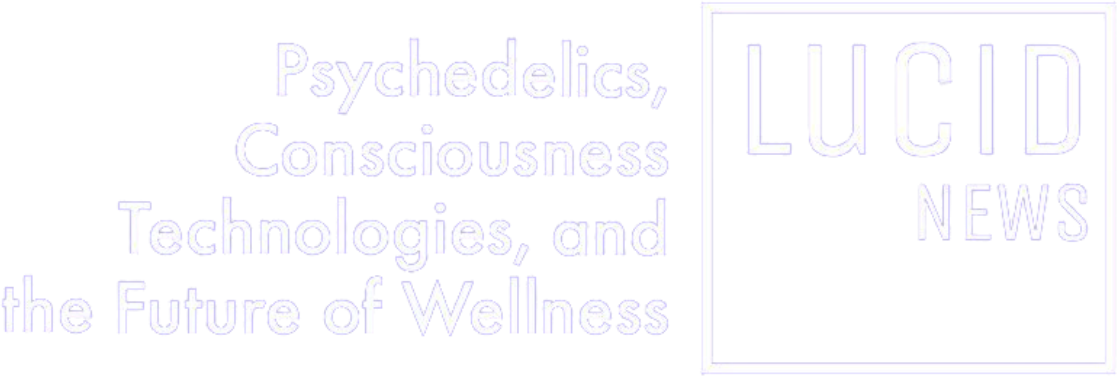Report: Day 1 of MAPS’s Psychedelic Science 2023

The MAPS 2023 Psychedelic Science conference kicks off in Denver, CO today. Starting Monday, the conference held a series of pre-conference workshops that offered participants a view into a range of topics impacting the psychedelic ecosystem. Lucid News is publishing a daily roundup of news from the conference, including coverage of workshops and briefings that took place yesterday.
(You can read our other coverage of Psychedelic Science 2023 here: Day 2, Day 3, and the Final Round-up.)
Psychedelic Judaism
On Tuesday, about 100 people gathered for a pre-conference workshop to answer the question, “What is psychedelic Judaism?” This was the second iteration, and first in-person gathering, of the Jewish Psychedelic Summit (JPS), founded as a virtual conference in 2021 by Natalie Ginsberg of MAPS, Rabbi Zac Kamenetz of Shefa Jewish Psychedelic Support, and me (Madison Margolin).
Using Open Space Technology, led by facilitator Maya Rimer, the Summit consisted of bottom-up, participant-led workshops and conversations, inviting attendees to pose discussion topics and spearhead conversations around the central question defining and exploring psychedelic Judaism. Rather than passively listening to panels, participants were empowered to be thought leaders and self-organize creatively and spontaneously constructed conversations that encouraged growth and evolution around meaningful topics: Jewish intergenerational trauma and the Holocaust, Messianic moments in psychedelic experience, embodiment and mysticism, Jewish traditional song as medicine music, and more.
The workshop was revolutionary in its way, bringing together people from across geographical, religious, gender, and psychedelic spectrums who might otherwise have no common ground to stand on together—but for the psychedelic commonground. Participants came from across the world, from all over the US, South America, and Israel-Palestine; and were both Jewish and non-Jewish, and from varying levels of religious observance from secular to Orthodox. – Madison Margolin
Psychedelic Science 2023 Industry Briefings
Psychedelic Industry Briefings, offered before the official start of Psychedelic Science 2023 conference, presented a series of panels that discussed the imminent availability of psychedelic-assisted therapies, investments in the sector, and the role of media, clinics, manufacturing, and therapy. The briefings highlighted the tension between investor returns and public good, with the for-profit MAPS Public Benefit Corporation opting for a corporate structure which panel moderator Lewis Goldberg says better align incentives better while still remaining focused on returns for investors.
Goldberg, who is the managing partner of KCSA which provides public relations services for the MAPS non-profit and MAPS PBC, said investment strategies in the psychedelic sector suggested a focus on long-term positive outcomes and reflects the uniqueness of the industry.
Goldberg noted that current funding is insufficient for many companies seeking full FDA approval of psychedelic-assisted therapy and compounds. He notes that reliance on later-stage investors is expected for companies to engage in clinical trials and other research. Panelists also discussed the premature public listing of psychedelic companies in 2021, referred to as the “rainbow rush”, and the attractiveness of the Canadian market for early-stage funding despite its lack of institutional support..
The broad potential for psychedelic therapies, especially for medical applications, was also highlighted by panelists as having far greater potential than cannabis, with an emphasis on the importance of brand building for consumer-facing companies. Investor concerns include patent issues, funding strategies for smaller companies, and support for international companies.
In terms of clinical and manufacturing perspectives, significant challenges include aligning therapy expectations with the clinical trial process, learning from the mistakes of the cannabis sector, and developing intellectual property around long-existing drugs. The placebo effect in psychiatry and the need for sufficient participants in trials were also identified as issues.
Overall, the Psychedelic Industry Briefing underscored the potential of the psychedelic industry, while also highlighting the significant challenges and uncertainties it faces in investment, regulation, intellectual property, and clinical trial design. – Floris Wolswijk
When Will Psychedelic Stocks Bounce Back?
Shares of publicly-traded psychedelics companies are “in the shitter,” declared veteran PR guy Lewis Goldberg of KCSA during an industry briefing presented before the start of the Psychedelic Science. No one disagreed. Indeed, it’s become conventional wisdom that startups in the sector erred by going public too soon. Venture investor Lindsay Hoover, the managing partner of the JLS Fund and one of the panelists at the briefing, said: “It’s probably too bad that these companies went public but they showed the others that it probably wasn’t a good idea.”
Despite the low share prices, about 50 public psychedelics companies remain, according to Psychedelic Alpha, all with shareholders hoping for a turnaround. What might spark a rebound?
All eyes are on the MAPS Public Benefit Corporation.
“I think we’re all waiting for MAPS to get the first FDA-approved psychedelic drug,” said panelist David Feldman, CEO of Skip Intro Advisors, a firm that advises psychedelics and cannabis companies. MAPS is awaiting FDA approval of MDMA-assisted therapy which has concluded clinical trials.
Dina Burkitbayeva, the CEO of startup Freedom Biosciences, said investors could turn bullish on drug-development startups because of the growth of Spravato, the patented esketamine nasal spray owned by Johnson & Johnson. Spravato, which is FDA- approved for treatment-resistant depression, recorded sales of $131 million during the first quarter of 2023, up 86.9% from the same period last year.
That said, no one expects a turnaround soon. “Twelve to 18 months from now could be very exciting,” Feldman said. “The folks who hang in there could be rewarded.” – Marc Gunther
How Music Heals
Playlists for psychedelic-assisted therapy can help shape the client’s emotional journey while grounding the therapists in their process. Developing those playlists was the subject of a workshop on Tuesday that took place before the start of the main portion of the Psychedelic Science 2023 conference.
Psychotherapist Eric Sienknecht noted during the workshop that playing songs unfamiliar to clients can produce therapeutic benefits, especially when played in the first two thirds of the session. He said novel music can help “disrupt the predictive machinery of the mind,” nudging clients towards new sensations and insights.
Workshop presenter Wende Reynolds, LPC noted that when a client has a novel experience during a therapy session, the music can be revisited as part of integration. Anchoring the breakthrough “to a new song can be an exceptional way to bring that experience back into their ordinary life,” she said.
Michael Alpert, MD, who also spoke at the workshop, advised that therapists, like DJs, should be discriminating about requests. Developing an understanding of a client’s taste and sonic triggers in a preparatory session is essential, but said “frequent requests to change music may be a sign of avoidance of the material that the music is evoking.”
As Sienknecht noted, “client tastes inform the playlist, but your taste matters too. It supports your process as well.” – Charles Lighthouse
Deep Space Odyssey at Psychedelic Science
The Deep Space exhibition gallery brings a dose of Burning Man-esque installations, interactive storytelling, and ceremonial depth to Psychedelic Science. Conference attendees can step out of the mega convention conference center hustle and into a black-light swaddled parallel dimension of guided plant medicine journeys, voice-loop driven VR experiences, meditation spaces, and abundant spontaneous magic.
Immediately upon setting foot in the exhibition hall, I was magnetically drawn to a spirited drum circle punctuated with storytelling and flute interludes.
I was then treated to an impromptu puppet show at the Dr. Bronner’s tent, and shortly after bumped into artist Stella Strzyzowska alongside her magnificent painting of Donald Trump smoking DMT.
I swear I saw atai Life Sciences founder Christian Angermayer meditating in the Moroccan-style tea lounge, but on my second pass through it turned out it was one of the puppets from the Bronner’s tent that someone had left on a pillow. Perhaps some of the ethereal afterglow from the 10:45 am rapé ceremony at Chacruna’s Ceremony Tent factored into the case of mistaken identity.
I zipped myself up in one of the handful of portable mini infrared sauna tents in the venue to recalibrate. Deep Space serves as a welcome respite from the more standard pharmaceutical and business-focused tracks of Psychedelic Science. – Dennis Walker
TOMS Shoes Founder’s Big Pledge
A journey with ayahuasca in Peru. A pitch from author and podcaster Tim Ferriss. And briefings by the Psychedelic Science Funders Collaborative.
These factors led Blake Mycoskie, the founder of TOMS Shoes, to pledge $100 million to the psychedelics movement, making him one of the largest–if not the largest–donor to psychedelic research and advocacy.
The pledge represents about one-fourth of his net worth, Mycoskie said. “The movement has the potential to really explode,” he said.
Mycoskie’s belief in the power of psychedelics began with what he described as a “transformative experience” with ayahuasca in 2016. Afterwards, he said, “Everything in life felt a little bit more divine, a little more perfect.”
Ferriss called a couple of years later to ask him to become a founding donor to the Johns Hopkins Center for Psychedelic and Consciousness Research. He agreed to give $4 million.
Subsequently, Mycoskie attended a briefing of the funders collaborative, intending to pledge $25 million. He decided on the spot to promise $100 million. “If I’m going to get into something, why not go all in?” he said.
Since then, Mycoskie has given to the Multidisciplinary Association for Psychedelic Studies, the Healing Advocacy Fund that supports regulated psilocybin service centers in Oregon and Colorado, the Indigenous Medicine Conservation Fund and to VETS, which enables military veterans to obtain psychedelic-assisted therapy, among others.
Going forward, Mycoskie said his top priorities will be helping MAPS win FDA approval for MDMA-assisted therapy, ensuring that the rollout of psilocybin therapy in Oregon and Colorado goes well and helping veterans get access to psychedelic-assisted therapy through the Veterans Administration.
He’d also like to come up with ways to ensure wide access to psychedelics. “I would love to become the Sam Walton of psychedelics,” Mycoskie said. “Everyday low prices.” – Marc Gunther
Conservation and Justice of Peyote in the Americas

Peyote conservation doesn’t just refer to preserving the cactus or devising strategies to protect it from the wrath of climate change. It’s about conserving indigenous languages, traditions, land, and prayers. That was the message from Steven Benally, a healer from the Sweetwater, Diné (Navajo) Nation, at Wednesday’s Conservation and Justice of Peyote in the Americas panel.
“Everything we have ever held dear to our hearts has somehow been compromised, taken away, and has put us in a situation where we’re in desperate measures to hang on to what’s left,” said Benally. “This medicine, peyote, is one of them.”
Many of the roughly 80 people in attendance responded to the panelists’ statements with audible “mmmm’s,” “ahhhh’s” and snaps of affirmation – particularly when Sandor Iron Rope of the Oglala Lakota Oyate Nation from Pine Ridge, South Dakota discussed reciprocity.
“When settlers came over from Europe, they were fleeing,” said Iron Rope, whose family on his mother’s side are survivors of the Wounded Knee massacre. “They had trauma themselves, and they inflicted that trauma upon our villages and people and it just trickled from there.”
Also on the panel was Lucy Benally, a founding member of the Youth Committee with Azee’ Beenahagha of the Diné Nation to educate Diné Youth on peyote conservation and reconnecting with Diné traditions, and Forrest Tahdooahnippah of the Comanche Nation, who is an assistant professor of law at Mitchell Hamline School of Law and specializes in Native American law. the moderator was Miriam Volat, executive director at Indigenous Peyote Conservation Initiative.
The panel ended with a discussion about the lack of consent to decriminalize peyote. Lucy Benally pointed this as an example of the “extractivism” of the “psychedelic renaissance,” reminding people that Natives are in a constant battle of erasure. The best way to support indigenous people, she noted, is to respect what they say and do as they ask. – Mary Carreon
Edited by Ann Harrison and Ken Jordan
Featured Image: Deep Space at the Psychedelic Science 2023 conference courtesy of Dennis Walker.








